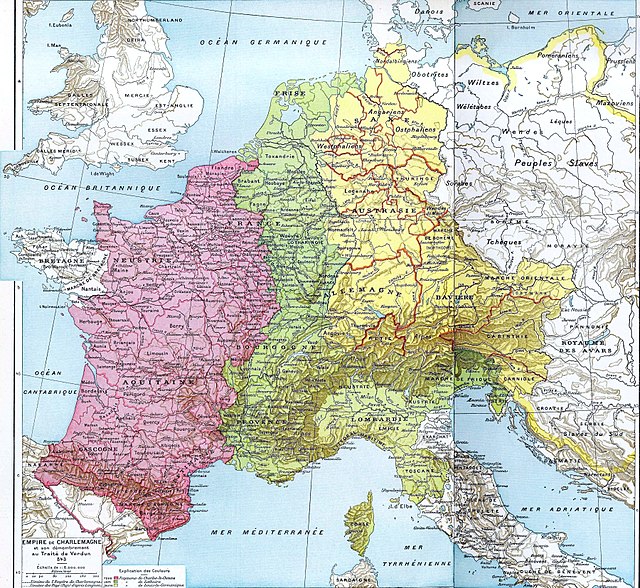Louis the German, also known as Louis II of Germany, was the first king of East Francia, and ruled from 843 to 876 AD. Grandson of emperor Charlemagne and the third son of Louis the Pious, emperor of Francia, and his first wife, Ermengarde of Hesbaye, he received the appellation Germanicus shortly after his death, when East Francia became known as the kingdom of Germany.
Louis's seal with an effigy of the Roman emperor Hadrian. The inscription reads "XPE PROTEGE HLUDOICUM REGEM" meaning – "O Christ, protect King Louis!"
Wandelbert presents his martyrology to a king, probably Louis the German, in a 9th-century illustration
Carolingian gatehouse (Torhalle) to Lorsch Abbey, where Louis the German was buried
Contemporary illustration from the Louis the German Psalter depicting Louis (bottom) genuflecting at Christ on the cross
East Francia or the Kingdom of the East Franks was a successor state of Charlemagne's empire ruled by the Carolingian dynasty until 911. It was created through the Treaty of Verdun (843) which divided the former empire into three kingdoms.
The partition of the Carolingian Empire by the Treaty of Verdun in 843. From Histoire Et Géographie - Atlas Général Vidal-Lablache, 1898.





